How to Fix PUBG Lagging on PC and Mobile?
For all the popularity PUBG gets, not all of it is in a positive light. Although PLAYERUNKNOWN’s BATTLEGROUNDS (PUBG) is one of the few game titles that managed to keep a player stable games since it entered early access, framerate issues and lagging is still omnipresent on both the PC and the Mobile version. In this article, we’ll focus on exploring the most effective fixes that will allow you to play this game with a decent FPS count.
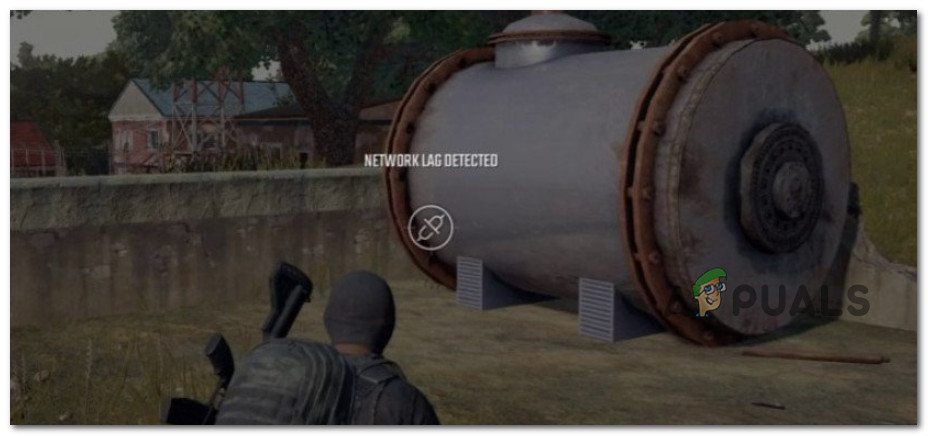
Before we get to the actual fixing part, it’s important to start by being aware of the most common causes so you know which type of fix you need to apply.
Here’s a list of every confirmed cause that might cause lagging and framerate issues with PUBG and PUBG mobile:
- Network Bandwith-hogging programs – One potential reason your in-game network might be lagging could be other programs on your computer hogging up too much bandwidth. Take a look at your open programs and close any you don’t need running. If you’re working with limited bandwidth, doing this may help improve your game’s network status.
- In-Game Graphic settings are too demanding – PUBG is by no means a resource-demanding game, but you might run into FPS issues and experience lagging in scenarios where you’re attempting to run PUBG on the maximum resolution with the maximum graphic settings on a low-end PC. If this scenario is applicable, you should be able to fix the problem by adjusting the in-game settings of PUBG to match your PC configuration.
- High DPI Scaling behavior is enabled – You might experience this type of problem if the main PUBG executable is configured to run in High DPI scaling mode. This won’t be an issue with medium and high-end PC, but might cause a problem with low-end PCs as your GPU will struggle to create the necessary pixel density.
- The laptop is using a High-Performance tab – If you’re experiencing this problem while playing PUBG or PUBG Mobile from a laptop, the first thing you should do is ensure that you are using a High-performance Power plan. Additionally, ensure that your laptop is always plugged in while playing the game.
- Steam lag fix is not applied – If you are experiencing this while launching PUBG via Steam, you should consider applying the universal ‘lag fix’ that the majority of community members go to in order to improve their stuttering issues. This involves setting a custom launch option parameter in Steam.
- Unoptimized PUBG Mobile settings – If you’re playing PUBG Mobile and you’re not happy with your FPS count or you’re experiencing frequent stuttering, there are some in-game tweaks you can do to make the game a lot more stable.
- TSLGame.exe is not prioritized in Task Manager – In case you are using an optimizer app, you might find that the executable responsible for rendering the game (TSLGame.exe) is actually not prioritized inside Task Manager, which might force your system to allocate fewer resources than normal. You can address this issue easily by increasing the priority via Task Manager.
- 3rd-party firewall interference – If you’re having trouble connecting to your game, it could be because your firewall or antivirus software is interfering. Try adding your game to the firewall’s white list and see if that fixes the problem. If not, contact the vendor of the firewall and ask for help.
- Reduce the heat emanating from PC or laptop – If your computer is overheating, you may experience low FPS or lag issues. To check if your computer is overheating, look at your cooling system and see if it’s working properly. If not, clear the dust from the cooling system and vents.
- Incorrectly configured Tencent Gaming Buddy – The default settings of Tencent Gaming Buddy might not be ideal for your system, which can result in lag while playing PUBG Mobile. By changing the settings to be more tailored to your system, you can get more fps and better performance overall in the emulator.
- Tencent Gaming Buddy is not compatible with the Windows version – Compatibility mode is a feature in Windows that can help you run PUBG Mobile in an older version of Windows, such as Windows 7 or 8. This may help the game run better and more smoothly than in the latest version of Windows.
Now that we went over every potential cause of this issue, let’s dive into all the confirmed fixes that other users have successfully used to get to the bottom of this PUBG problem.
Remove network-hogging programs
One potential reason your in-game network might be lagging is that other programs on your computer are hogging too much bandwidth.
Take a look at your open programs and close any you don’t need running. If you’re working with limited bandwidth, this may help improve your game’s network status.
Our recommendation is to make sure you disable any torrent applications, file download programs, FTP programs, and driver updating features.
One quick way to figure out if one program is hogging your network resources is via Task Manager. Here’s what you need to do:
- Press Ctrl + Shift +Esc to open up Task Manager.
- In case Task Manager opens up with the simple interface, click on Show more.

Accessing the detailed version of Task Manager - From the detailed version of Task Manager, click on the Processes tab, then move over to the right-hand pane and click on the Network column at the top.
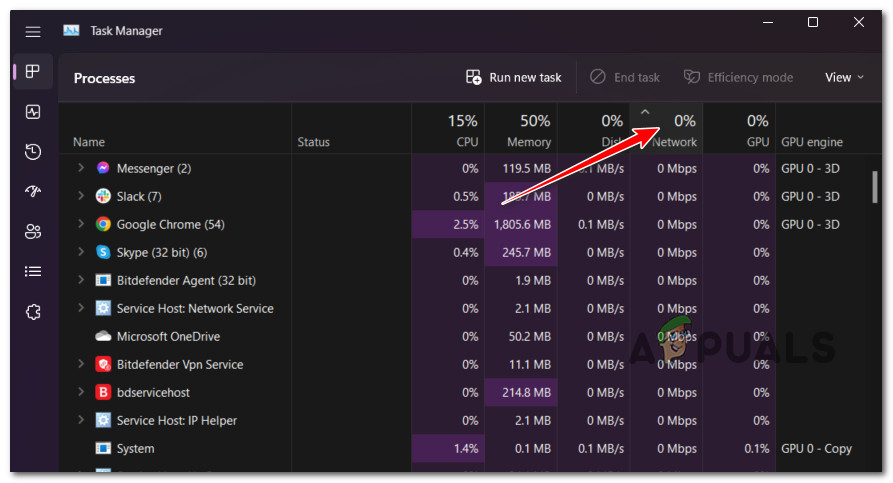
Ordering the Processes via network usage via Task Manager Note: This will order all the active processes in the order of their network bandwidth consumption.
- Next, right-click on the most network resource intensive processes and click on End Task from the context menu.
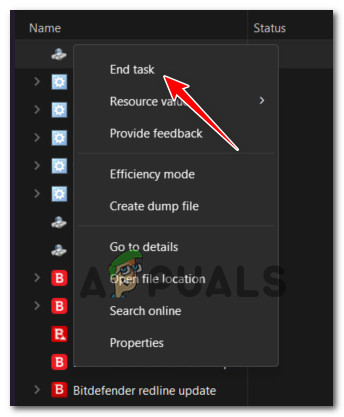
Ending the task of network intensive tasks - Launch the PUBG once again and see if the problem is now fixed.
In case you did some housekeeping and closed every network-hogging process and the issue is still not fixed, move down to the next method below.
Tweak the In-Game Settings of PUBG
No matter how modest your computer’s specs are, there’s no reason you can’t enjoy PUBG. However, if you’re pushing your machine to its limit by running the game on max settings at 4K resolution, you may start to see some FPS issues and lag.
To solve this problem, simply adjust the in-game settings of PUBG to better match your PC configuration.
Here’s what you need to do:
- Open the Steam client and log in to your account, then go to Library and launch PUBG.
- Now open “Settings“, and select “Graphics” option.
- Change the Display Mode to “Fullscreen“.
- Keep the Resolution which your monitor has for desktop, If you change it to low you might get more FPS.
- FPP Camera FOV should be between “70-80” for low-end, “80-90” for mid-range and above that is for high-end PC.

Toning down the in-game PUBG settings - Below that you can keep everything “Very Low” or “Low”
- Now go to “Gameplay“, and change these three options which are shown below:
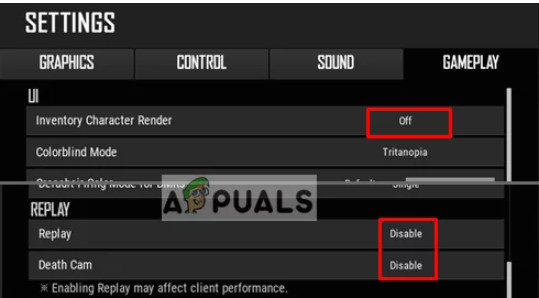
Tweaking the gameplay settings of PUBG - After changing all the above settings, check the FPS difference and lag issue.
If the problem is still not fixed, move down to the next method below.
Override High DPI Scaling
This type of problem could occur if the PUBG main executable is configured to run on High DPI scaling mode. Medium to high-end PCs shouldn’t have any issues, but lower-end PCs might struggle since their GPUs wouldn’t be able to manage the required pixel density.
If you’re looking for specific instructions that will help you make sure this is not an underlying issue causing lagging issues with PUBG, follow the steps below:
- Open the Steam client and log in to your account, then click on “Library“
- Right-click on “PUBG” from the list and go to Properties
- Click the “Local Files” tab, then click “Browse Local Files”
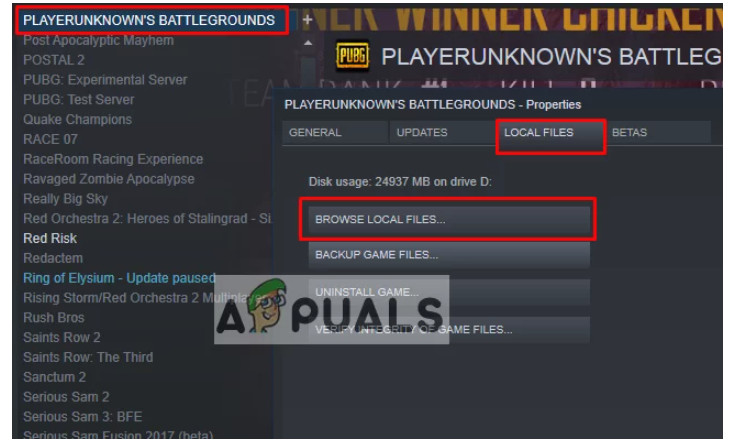
Accessing the Local files - Once you’re inside the root directory of the game, navigate to the following subdirectory:
TslGame > Binaries > Win64
- Right-click on “ExecPubg” and select Properties.
- Select the “Compatibility” tab and tick “Disable full-screen optimizations“
- Click “Change high DPI settings“, a new window will popup.
- Tick “Override high DPI..” click OK and save it.
Note: In Windows 8 this will look a bit different like “Disable display scaling on high DPI settings“ - Do the same for the “TslGame”.
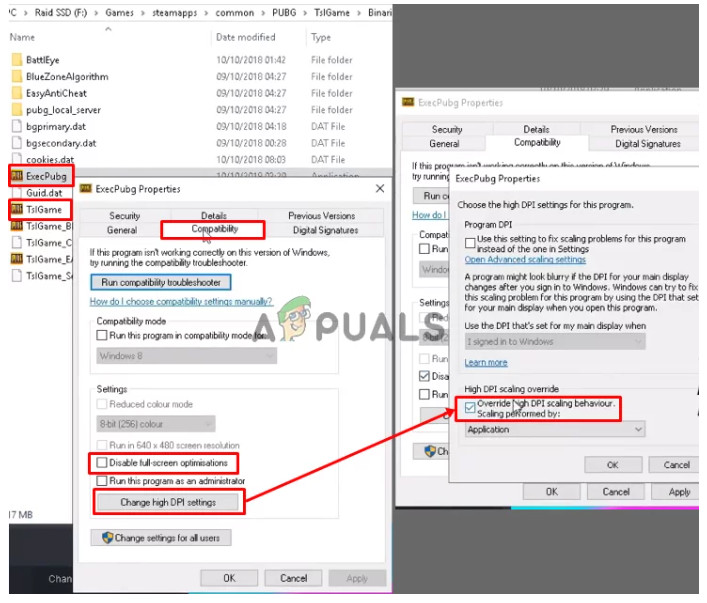
Disabling High DPI scaling - Launch PUBG once again and see if the problem is now fixed.
If the same kind of problem is still occurring, move down to the next method below.
Force a High-Performance Power Plan (if applicable)
If you’re experiencing performance issues while playing PUBG or PUBG Mobile on your laptop, the first thing to do is check that you’re using a High-performance Power plan. Additionally, you need to make sure your laptop is always plugged in while playing the game.
If you’re using a restrictive power plan that is actually stopping the syncing feature in order to conserve battery power, it might end up affecting the game. Obviously, this can only occur on laptops and other portable PCs.
Several affected users have reported that they managed to resolve the issue by accessing the Power Options menu and making the switch to a power plan that doesn’t include the stoppage of file syncing.
Here’s how you can make sure your OS is not blocking the syncing feature of PUBG:
- To access the Power Options menu, press the Windows key + R to open a Run dialog box.
- Type “powercfg.cpl” in the text box and press Enter.
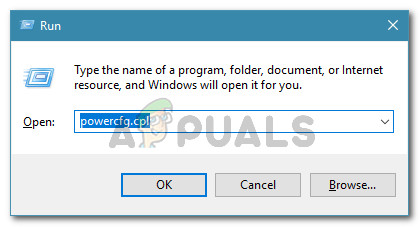
PowerCFG Note: Alternatively, you can search for “Power Options” in the Start menu.
- In the Power Options window, go to the right-hand pane and change the active power plan from Power Saver to Balanced or High Performance.
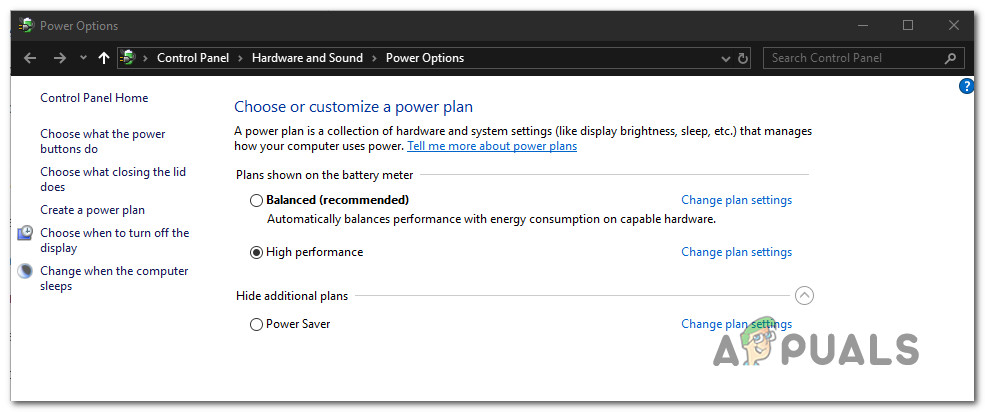
Change the High Performance - Once you’ve made the changes, restart your computer and check if the issue has been resolved upon startup.
If PUBG is still suffering from the same issues, move down to the next method below.
Establish Special Launch options via Steam
If you’re having trouble launching PUBG through Steam, try applying the universally accepted ‘lag fix’ that a lot of other members of the community use to improve their stuttering issues. This involves setting a custom launch option parameter in Steam.
There are a lot of PUBG players confirming that once they customized PUBG with the custom launch parameter ‘-USEALLAVAILABLECORES -NOSPLASH -nomansky +mat_antialias 0‘, the FPS count improved dramatically and the lagging issues have all but disappeared.
Follow the instructions below for specific instructions on how to do this:
- Open the Steam client and log in to your account, then click on “Library“.
- Right-click on “PUBG” in steam library and go to “Properties“.
- Click on “Set Launch Options” and paste code:
-USEALLAVAILABLECORES -NOSPLASH -nomansky +mat_antialias 0
- Save the changes that you just did, then restart Steam and launch PUBG once again.
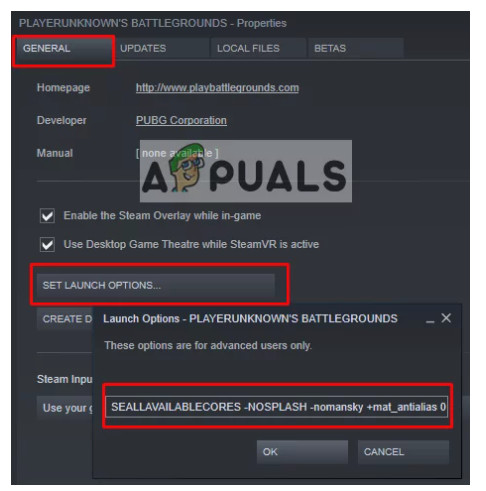
Customizing PUBG with a custom launch parameter
If the same kind of issues are still ongoing with PUBG, move down to the next method below.
Adjust the In-Game Settings of PUBG Mobile (if applicable)
If you’re playing PUBG Mobile and you’re not satisfied with your FPS or you’re experiencing stuttering, there are some in-game changes you can make to improve game stability.
Note: This method is only applicable in case you are plying the mobile version of PUBG on PC.
You can improve your “Graphics” settings in order to increase the FPS limit in PUBG Mobile. By doing this, you will make the game run more smoothly without any lag. There are only four steps involved in this process.
Here’s what you need to do:
- Open PUBG Mobile in your mobile/emulator and log in to your account.
- Go to “Settings“, and click on “Graphics“.
- Set graphics to “Smooth” and the frame rate to “Extreme“.
- Disable the “Anti-aliasing” and “Auto-adjust graphics”.
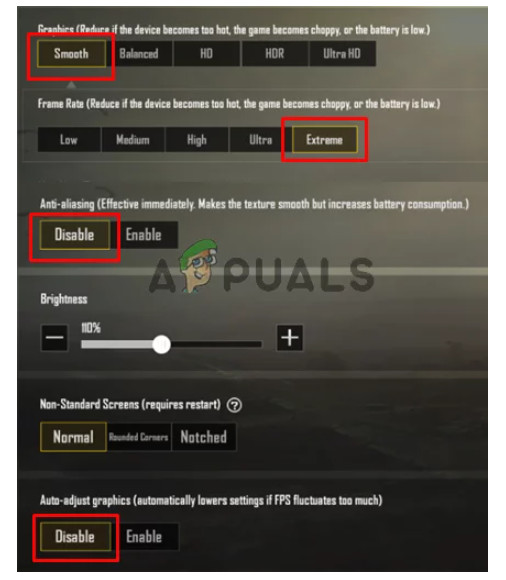
Adjusting the Graphic settings - Launch the game once again and see if the problem is now fixed.
If the problem is still not fixed, move down to the next method below.
Prioritize TSLGame.exe via Task Manager
If you’re using an optimizer app, you might notice that the executable responsible for rendering the game (TSLGame.exe) is actually not prioritized in Task Manager. This can cause your system to allocate fewer resources than normal. To fix this issue, simply increase the priority of the executable via Task Manager.
Open “Task Manager” every time you start the game and set the priority of the game to high. This will tell your system to give the game more CPU and memory than other programs that are running.
Here’s how to do this:
- Start the game and minimize it, then hold the Windows Key and Press R to open a Run dialog box.
- Type “taskmgr” and Enter to open Task Manager, then go to Details tab.
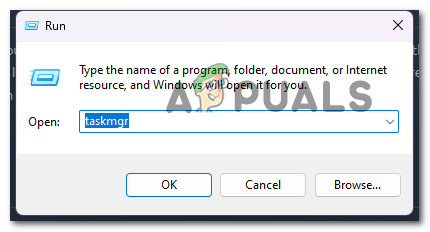
Opening up Task Manager Note: If you’re prompted by the User Account Control, click Yes to grant admin access.
- You will find “TslGame.exe“, right-click it and set priority to “Above Normal” or “High”
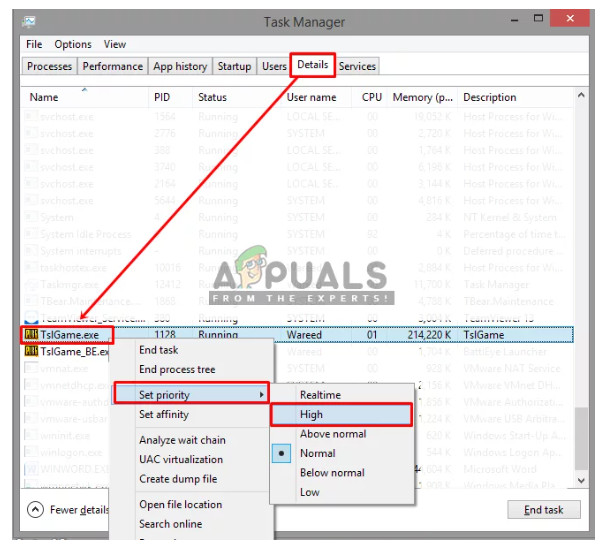
Changing the Priority to High Note: For PUBG Mobile running on PC, you can do the same by changing priority.
- Return to your game and see if the problem is now fixed.
If the problem is still not fixed, move down to the next method below.
Disable the active firewall
If you’re struggling to connect to your game, it might be because your firewall or antivirus software is interfering. Adding your game to the firewall’s white list could fix the problem. If not, try contacting the vendor of the firewall for help.
Although this issue is considerably more common with third-party antivirus software, we did find a few user reports of it happening with Windows Firewall.
If you find yourself in this situation and assume that your firewall is to blame, you can quickly test this assumption by removing the currently active firewall functionality.

If you’re using a third-party firewall, turn it off for the time being before rebooting and attempting to install the failed Windows Update again.
Note: The exact instructions for disabling your third-party firewall will vary depending on the tool. For detailed instructions on turning off your 3rd party firewall’s real-time protection, consult the official documentation.
On the other hand, if you’re using Windows Firewall, follow the instructions below to temporarily disable Windows Firewall:
- To launch the Run dialog box, press Windows key + R.
- Then, in the text box, type’ms-settings:windowsdefender’ and hit Enter to bring up the Windows Defender Security Center window.
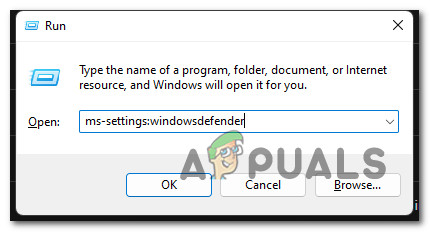
Accessing the Windows Defender - If the User Account Control prompts you, select Yes to grant admin access.
- Click Firewall & Network Protection in the left-hand pane once you’re within the Windows Security panel.
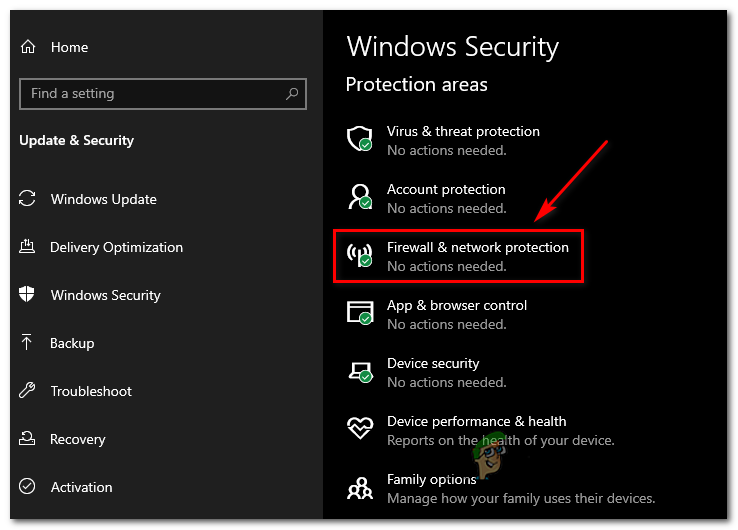
Accessing the Firewall and Network protection menu - When you’ve arrived at the Firewall & Network Protection menu, select the presently active network, then scroll down through the list of settings to disable the Windows Defender firewall toggle.
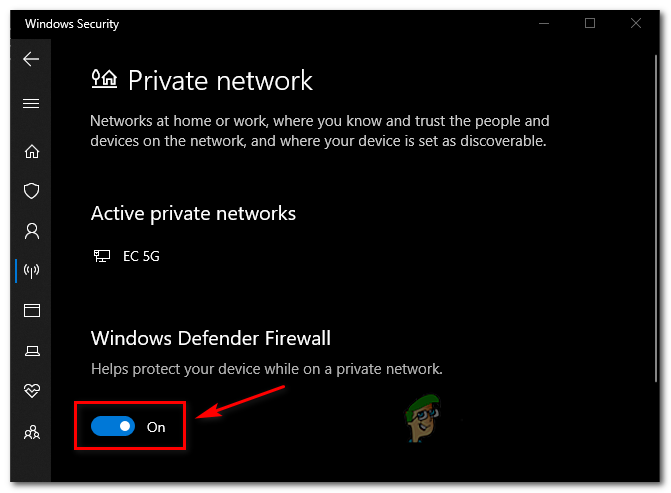
Disable the Windows Defender firewall - Now that the firewall component is disabled, launch PUBG once again and see if the problem is now fixed.
Note: If disabling the firewall component didn’t fix the issue in your case, move down to the next method below.
Reduce the heat from your PC / laptop
You may notice poor FPS or lag if your PC is overheated. Examine your cooling system to verify whether it’s functioning properly to see if your computer is overheating. If not, clean the cooling system and vents of dust.
Note: Dust clogs up fans all the time. Because these fans do not provide a lot of torque, the accumulation could reach the fan blades and prevent them from spinning. You may clean your fan by disassembling it. If you’re not sure how, acquire a can of compressed air and spray it through the vents. Make sure your fan does not reach too high an RPM (Revolutions per minute) because this can damage it.
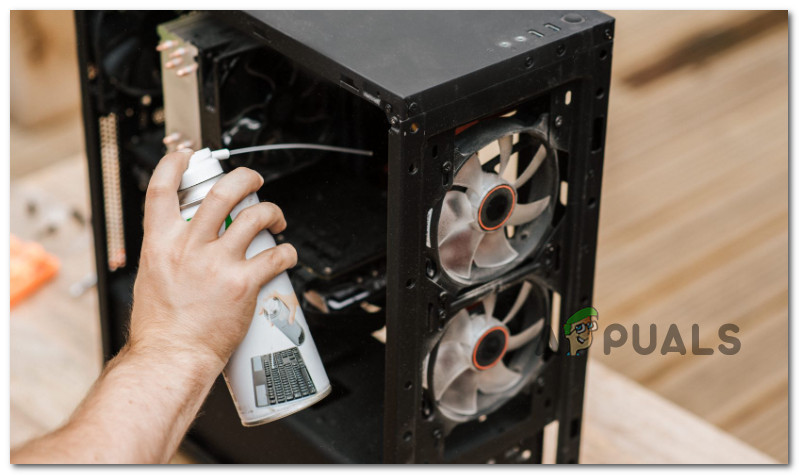
If you’ve done all you can to clean your PC and you’re still experiencing the same kind of issue, move down to the next method below.
Reconfigure the Tencent Gaming Buddy (if applicable)
This method is only applicable if you’re playing PUBG Mobile via Tencent Gaming Buddy.
Note: Tencent Gaming Buddy’s default settings may not be optimal for your system, resulting in lag while playing PUBG Mobile. You can gain more frames per second and better overall performance in the emulator by altering the parameters to be more customized to your machine.
Several affected users have confirmed that this method was the only thing that allowed them to make the lagging bearable and improve the FPS count.
Here’s what you need to do:
- Open Tencent Gaming Buddy by double-clicking the shortcut, then click on the Setting Bar on the top right corner and go to “Settings”.
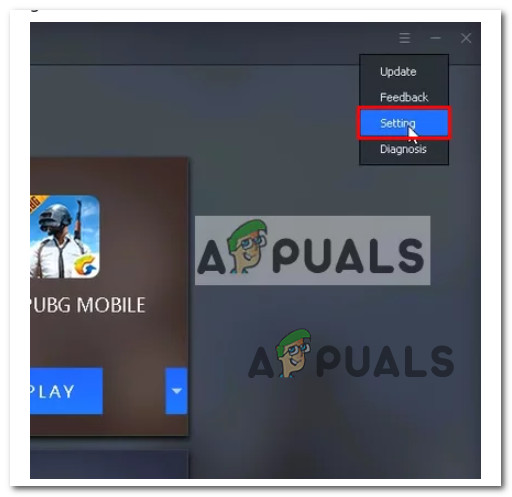
Accessing the Settings menu - Select “Engine” and change rendering mode to “OpenGL+” (depends on GPU) or “DirectX+” (depends on CPU) according to your system specs.
Note: The default rendering mode will be “Smart mode“, which actually messes up cache directory. - If you have dedicated GPU (NVidia or AMD) tick “Prioritize Dedicated GPU” and if you only have “Intel Graphics” then untick it.
- Keep the memory always half of what you have.
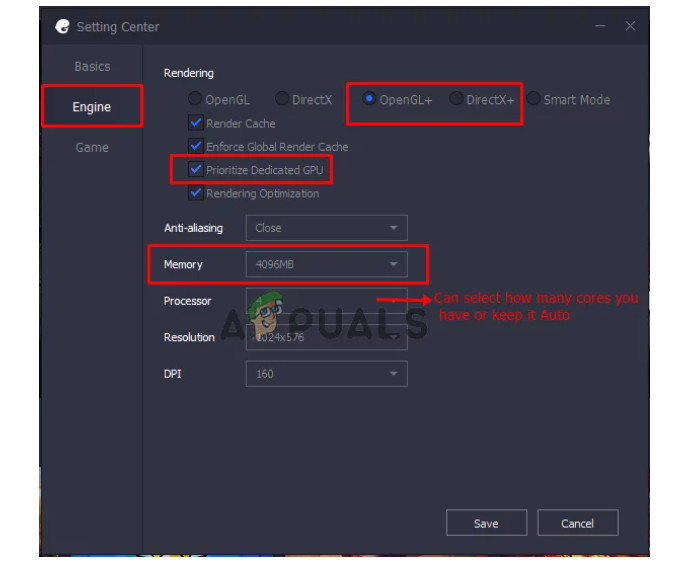
Adjusting the Tencent Settings Note: If you have 4GB RAM then half will be 2GB, Same if 8GB then put 4GB, always half of what you have.
- Click on “Game” option, then you can change Gaming Resolution by selecting “SD 720” for low spec, and “Ultra HD” for high-end PC and GPU.
- In “Display Quality“, you should tick “Smooth” (it removes shadows and shader to help with the lag)
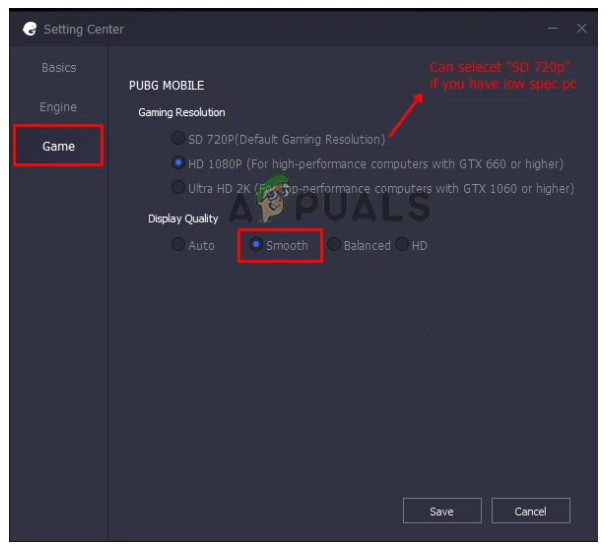
Modifying the final settings for Tencent Buddy - Click “Save“, then start game and check the lag.
- Launch PUBG Mobile once again and see if the problem is now fixed.
If the problem is still occurring, move down to the next method below.
Run Tencent Gaming Buddy in Compatibility Mode (if applicable)
Compatibility mode is a Windows feature that allows you to run PUBG Mobile on an older Windows version, such as Windows 7 or 8. This may make the game operate faster and more smoothly than it currently does on your active OS.
Note: This method is only applicable if you’re playing PUBG Mobile using Tencent Gaming Buddy.
If you’re attempting to play the game using an older Tencent Gaming Buddy build that’s not optimized for Windows 10 or Windows 11, follow the instructions below to force compatibility mode on the emulator:
- Right-click on Tencent Gaming Buddy shortcut, select “Properties” and click “Open file location” in the shortcut.
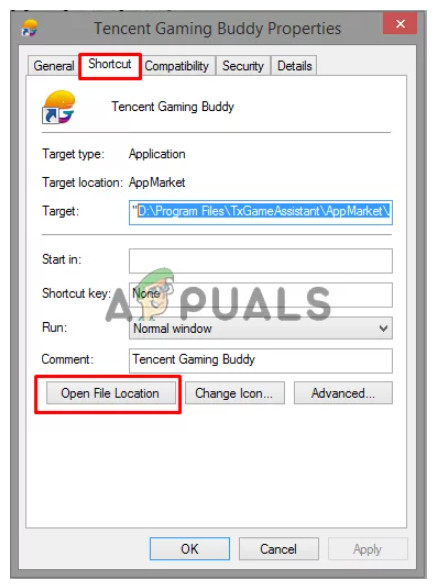
Accessing the installation location of Tencent Gaming Buddy - Now right-click on “AppMarket” and go to Properties.
- Open “Compatibility” tab and select “Run this program in compatibility mode for“, in this you can select Windows 7, 8 or you can click on “Run compatibility troubleshooter” to make auto recommended settings.
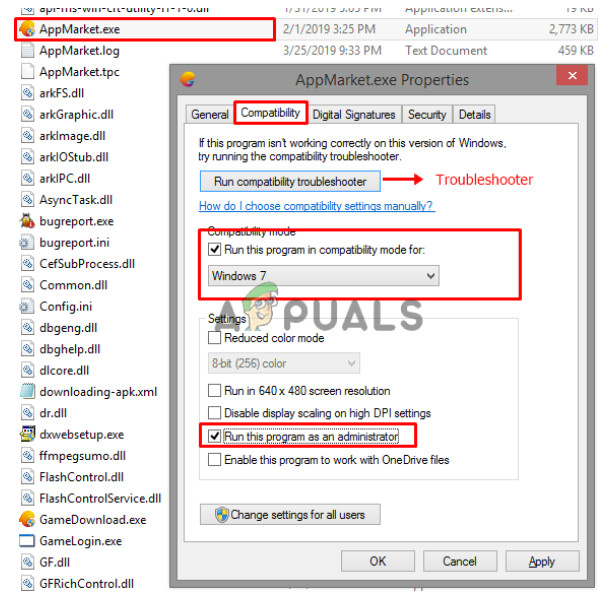
Modifying the behavior of AppMarket - Also, tick “Run this program as an administrator”.
- Click “Apply” and “OK“, now check your game for lag.





